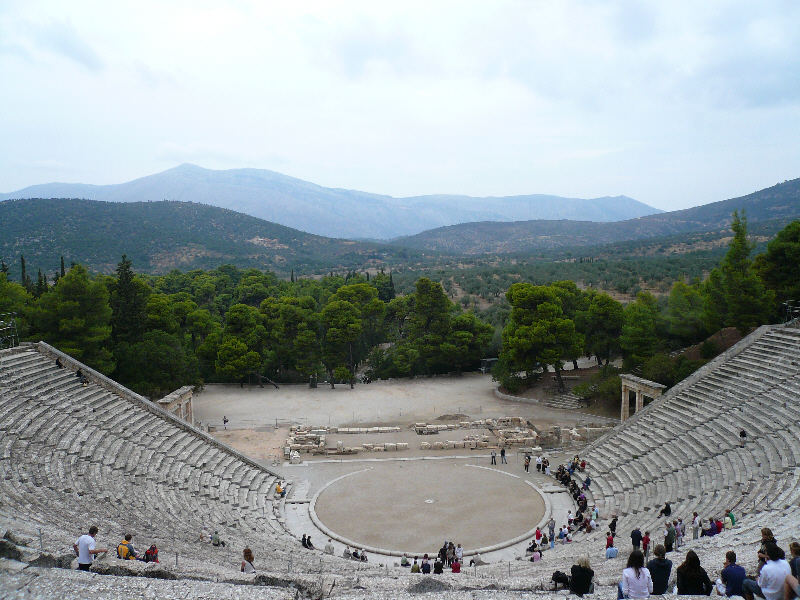There are many places I have been so fortunate to visit with groups in my years of touring with EF and quite a few that I look forward to visiting again with family in the future. High on that list would be the ancient theatre at Epidaurus in the northeastern Peloponnese of Greece. It is somewhere that I always look forward to traveling to and a personal tour highlight for me.
The ancient theatre of Epidaurus was a product of the wealth in the area itself, brought about due to the Sanctuary of Asklepios from the 4th Century BC. This place of healing was one of the most famous anywhere in the world. According to the local tradition, Asklepios was son of Apollo and Koronidos, daughter of the Thessaly king, Flegia. Askelpios (whose name means ‘to cut open’) was born at the Tithio rock, where his mother left him because she feared the anger of her father, the King. A goat found and suckled the baby and the dog from the flock notified the shepherd, who found the infant. Classic scholars might query this story but I prefer local fables, plus my three year old daughter loves it, so it is good enough for me. Asklepios was given the healing gift and developed many of the temples and hospitals in the area. Patients from as far as Rome came for treatment. Every four years the Festival of Asclepieia took place at the ancient theatre of Epidaurus where dramas were staged and athletic competitions held.
Since the 1960s the Epidaurus Festival, (May to October) which is part of the Athens Hellenic Festival, has re-created ancient Greek classics in this fantastic setting, presenting an opportunity to experience theatre as the ancient Greeks did. The theatre is located in a green plain surrounded by mountains and was built in two stages, the first at the end of the 4th century BC and the second 600 years later when the famous three part characteristic of the Greek Theatre was finalized (shell – orchestra – stage). The seating area is up 180 feet high while the diameter of the orchestra is around 60 feet.
Visiting the ancient theatre of Epidaurus at any time is a fabulous experience. Guides lead groups up to the stage of the theatre and then tell them to go and take a position in any of the 15,000 limestone seats. From their spot at center stage the guide is still able to talk to the group and then go through a series of noises (such as tearing paper, soft clapping or striking a match) and even those seated in the furthest seats will hear this perfectly. The rows of seats greatly reduce low-frequency sounds (such as the noise of other groups of tourists) and amplify high-frequency sounds from the stage. These are such astonishing acoustics, set in the open-air and it always fascinates me. In addition, the setting is perfect; beyond the stage is wonderful scenery which was always a consideration in the construction of ancient Greek theatres.
The concept of harmony with nature was as fundamental as anything that could be performed on stage. My plan is to return here one day (group free) and scamper in as soon as the doors open to try and get just a few minutes alone in this marvelous environment. That said, even with the buzz of other people around the place, it is always a great visit.
What theatre have you visited that you would visit over and over again?
Related articles

